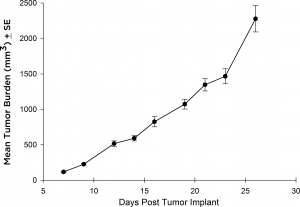While the direct contribution of CD19 to human B cell cancers is still under investigation, its expression is found on a majority of B cell malignancies. For example, acute lymphoblastic leukemia (ALL), B cell lymphomas, and B cell leukemias demonstrate 80%, 88%, and 100% CD19 expression, respectively.1 ALL presents with an overproduction of lymphoblasts in the bone marrow that continuously multiply resulting in the inhibition of normal hematopoietic cell production.
ALL is more commonly found in young children but also arises in older adults. Children have a >80% cure rate while adults only have a 20-30% cure rate. A similar disease is chronic lymphocytic leukemia (CLL) which is generally diagnosed in older adults. Both ALL and CLL have been identified as malignancies suitable for CD19-directed therapies. While anti-CD19 monoclonal antibodies and other approaches are being investigated for clinical development, by far the most common approach for targeting CD19-related malignancies are the Chimeric Antigen Receptor (CAR) modified T cells (CAR-T). CD19 was the first target used for this T cell therapy strategy and still remains an area of active clinical investigation.
Preclinically, the human Burkitt’s lymphoma cell line Raji has been a mainstay for determining anti-tumor activity for approaches related to B cell malignancies. At Labcorp, we employ a luciferase-expressing Raji cell line (Raji-Luc) to allow us to track disease progression and therapeutic response over time through in vivo optical imaging. Raji-Luc is an excellent model to evaluate CD19-directed CAR-T therapies. We have utilized this model in both SCID and NSG mice for more than a dozen CAR-T or other cellular therapy studies. In many instances the most immunodeficient mouse strain, NSG, is required for survival and persistence of the cellular therapy. Thus, we validated growth of Raji-Luc in NSG mice by in vivo bioluminescence imaging (BLI) (figures 1A & B) and found an aggressive dissemination of disease as illustrated by an approximately 20 day overall survival (morbidity/mortality, figure 1C) endpoint. Consistent with the rapid induction of disease, the mice presented with progressive body weight loss (figure 1D) and ultimate hind-limb paralysis that required euthanasia.






